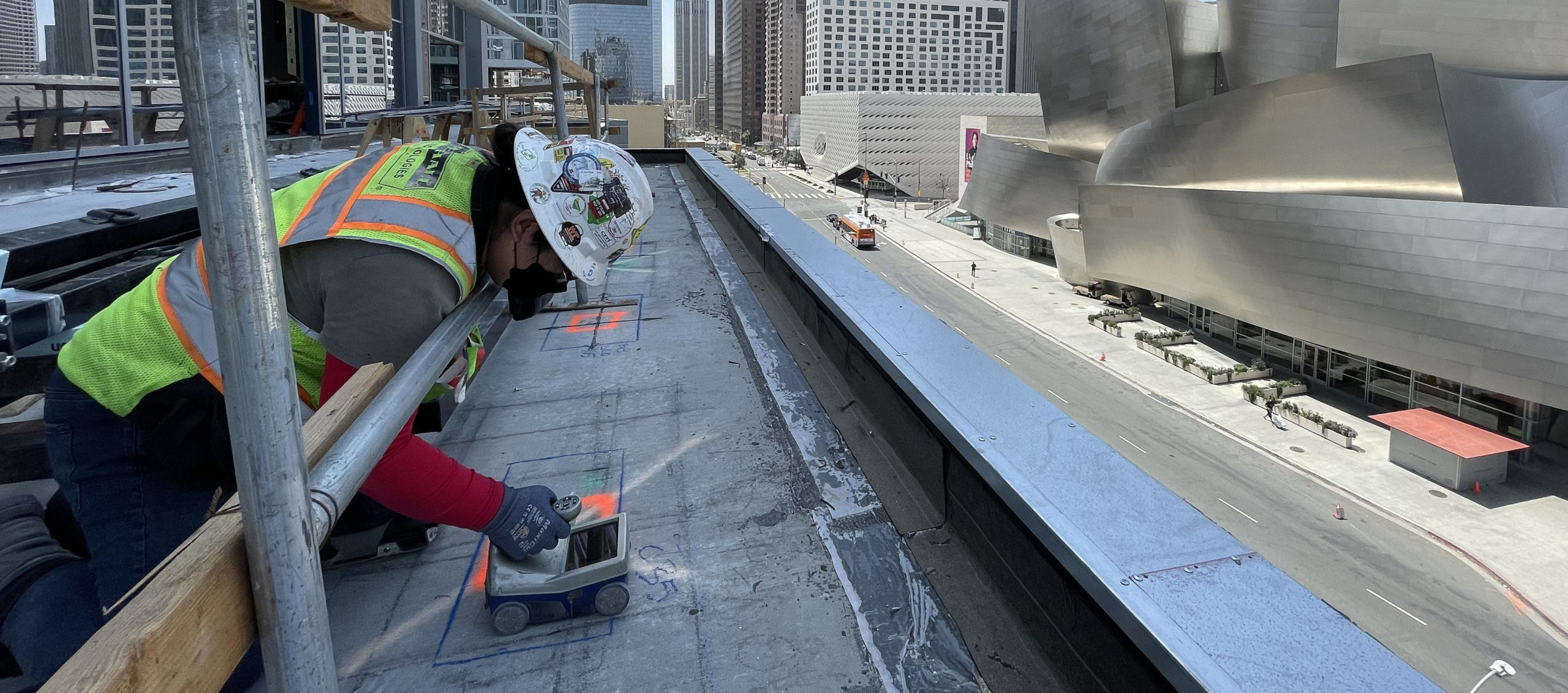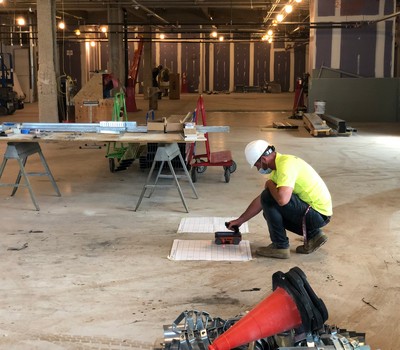Mastering RainierGPR Concrete Scanning: Crucial Tips and Tricks
Mastering RainierGPR Concrete Scanning: Crucial Tips and Tricks
Blog Article
Unlock the Key Conveniences of Concrete Scanning for Streamlined Workflow and Price Cost Savings
In the realm of building and facilities growth, the application of concrete scanning modern technology has actually changed project administration methods. The true value lies in the nuanced means in which concrete scanning can change the landscape of building and construction tasks, leading to structured procedures and significant price financial savings.
Enhanced Task Preparation and Implementation
Improved task preparation and implementation are critical parts in the effective execution of concrete scanning technology within construction projects. By including concrete scanning right into the preliminary task intending stage, construction teams can properly recognize the area of rebar, post-tension cords, and other embedded things within concrete frameworks. This information allows for even more accurate project organizing, reducing the risk of pricey errors or delays throughout the building and construction procedure.
In addition, with concrete scanning modern technology, job supervisors can produce in-depth 3D designs of the subsurface conditions prior to any exploration or cutting happens. This level of insight makes it possible for specialists to make informed decisions and changes to their building and construction plans, bring about enhanced task performance and general quality.
Essentially, the integration of concrete scanning improves job planning by providing important information that enhances decision-making procedures, reduces rework, and makes certain that building tasks are completed in a timely manner and within budget. By leveraging this innovative modern technology, building groups can improve procedures, mitigate risks, and provide effective end results for their clients.

Boosted Accuracy in Object Discovery
By integrating concrete scanning technology right into building tasks, the focus moves in the direction of accomplishing raised precision in things detection, specifically in identifying rebar, post-tension cable televisions, and other ingrained objects within concrete frameworks. By specifically identifying embedded items, construction teams can prevent pricey mistakes, remodel, and job delays.
Concrete scanning technology allows building and construction specialists to envision the internal composition of concrete frameworks in real-time, providing thorough understandings right into the visibility and positioning of items within the concrete. This degree of accuracy not only improves task planning and execution yet also reduces the danger of crashes and structural failures. With enhanced item detection capacities, construction teams can function extra successfully, reduce product wastefulness, and inevitably provide top quality jobs within budget plan and timetable constraints.
Improved Safety And Security and Danger Mitigation

Furthermore, concrete scanning aids in making certain the structural security of structures and facilities by spotting voids, delamination, or various other defects that might compromise the security of the job. By addressing these concerns early, building and construction teams can take the needed rehabilitative actions to reinforce the concrete and prevent future issues. Eventually, the boosted safety and risk reduction provided by concrete scanning technology not only secure the wellness of employees and the general public however additionally add to the overall success and longevity of building jobs.
Time Efficiency and Expense Cost Savings
Carrying out concrete scanning modern technology in building and construction tasks read this article can lead to considerable time performance and price savings. By using sophisticated scanning devices such as ground-penetrating radar (GPR) and electro-magnetic induction, building and construction groups can precisely find rebar, post-tension cords, and various other subsurface components without the demand for devastating approaches. This specific info enables structured task preparation and execution, decreasing the time spent on unforeseen delays due to striking unidentified items during excavation or exploration.
Additionally, the capability to identify prospective threats underneath the site here surface ahead of time can protect against expensive damages to devices and injuries to workers, further adding to overall price financial savings. Furthermore, the performance acquired from making use of concrete scanning technology translates into faster job conclusion times, enabling building firms to handle even more jobs and enhance their success.
Minimized Disruptions and Downtime
The use of concrete scanning modern technology not only improves time effectiveness and cost savings in building jobs however also plays an essential function in minimizing interruptions and downtime. By employing sophisticated scanning methods such as Ground Permeating Radar (GPR) or Concrete X-ray, building and construction groups can accurately find rebar, post-tension cords, conduits, and other subsurface structures within concrete structures without the demand for destructive investigatory techniques (RainierGPR Concrete Scanning). This precision in situating essential components helps protect against unexpected damages during exploration, reducing, or coring activities, therefore significantly reducing the danger of unforeseen downtime go to my site as a result of fixings or remodel
Moreover, concrete scanning enables project managers to prepare building activities more properly by determining potential obstacles beforehand. By having a clear understanding of the subsurface problems, building and construction staffs can strategically navigate around crucial areas, guaranteeing smooth progress and marginal disruptions. This aggressive method not only saves time but likewise adds to maintaining a risk-free functioning atmosphere for all workers included. Eventually, the reduced disturbances and downtime facilitated by concrete scanning modern technology cause enhanced task timelines, increased productivity, and total cost savings for construction tasks.
Final Thought
In verdict, concrete scanning supplies many benefits for structured operations and expense savings in numerous industries - RainierGPR Concrete Scanning. By boosting project planning and implementation, raising accuracy in object discovery, boosting safety and risk mitigation, conserving time and prices, and reducing disruptions and downtime, companies can maximize their procedures and achieve higher performance. In general, including concrete scanning right into procedures can result in enhanced results and a much more productive workplace
By including concrete scanning into the first job planning phase, construction groups can properly identify the place of rebar, post-tension cords, and various other ingrained things within concrete frameworks.By incorporating concrete scanning innovation into construction projects, the focus moves in the direction of attaining increased accuracy in item discovery, specifically in determining rebar, post-tension cables, and various other embedded items within concrete structures.Concrete scanning technology makes it possible for building and construction experts to envision the internal make-up of concrete structures in real-time, giving thorough understandings into the existence and positioning of things within the concrete. By using sophisticated scanning approaches such as Ground Permeating Radar (GPR) or Concrete X-ray, building groups can precisely locate rebar, post-tension cords, channels, and other subsurface frameworks within concrete structures without the demand for devastating investigative approaches. Eventually, the lessened interruptions and downtime promoted by concrete scanning technology lead to boosted task timelines, increased productivity, and total cost savings for building and construction tasks.
Report this page